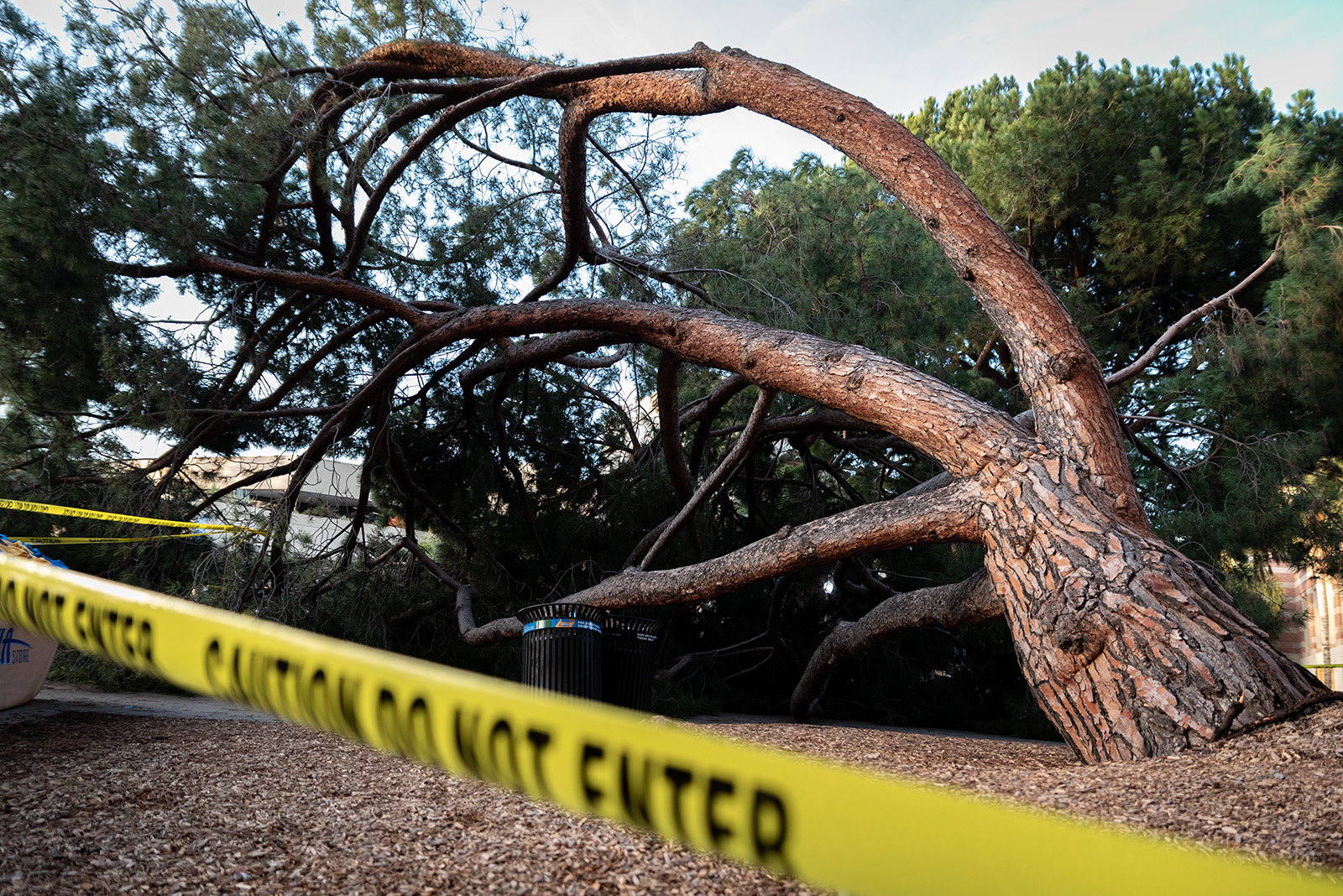The Quad: The root of the reason why trees are toppling down throughout town

The large tree just outside of Ackerman Union fell down, blocking off parts of Bruin Walk, shortly after a couple days of rainy and windy weather. (Liz Ketcham/Assistant Photo editor)
By Andrew Warner
Feb. 6, 2019 1:31 p.m.
Just a couple weeks ago, two trees fell down in Westwood within mere days of each other.
Nearly every year, trees fall like this – but why? With the recent fall of two large trees around campus, it’s important to understand what exactly causes trees to topple over. As it turns out, the reason is rather intuitive: It ultimately all boils down to the weather conditions.
It shouldn’t come as too much of a surprise, but windy and rainy weather – like the weather we’ve been experiencing these past couple of days – are often linked to trees like the one by Veteran Avenue or in front of Ackerman Union falling down. It’s not particularly uncommon for trees to fall in the middle of storms or in the days following them, as rain water soaks into the ground and gusts of wind blow at the trees.
Because trees are largely held up by a combination of their own weight and the friction in the soil pushing up against their roots, the aforementioned friction is easily weakened as soil grows saturated with rainwater.
According to the Los Angeles Daily News, the increased rainy weather, paired with years of drought conditions, may also exacerbate the situation in Southern California. Susan Sims, a Riverside-based arborist, told the LADN that as a result of the drought conditions throughout the state, many tree roots were weakened due to a significantly lowered amount of rainwater intake. After years of adapting to the drought conditions by developing a shallower root network, the trees are oftentimes not prepared for a heavy influx of rainwater.
In addition, tree roots often shriveled up and got infected with fungi during the drought, which consequently grows in response to heavier rains than the tree is used to.
This may or may not be the case with the trees that fell in January, but with all that rain in the days leading up to the tree falls, it’s certainly likely that the weather played a role somehow.
But trees don’t just fall in rainy weather either – perhaps a bit more surprising is a phenomenon known as “summer limb drop,” which has been noticed in areas with particularly hot weather. One theory for why this happens is that on hot days, trees don’t transpire – the process of releasing water through the leaves – but continue to take in water through their roots, causing limbs to grow heavier. This can lead to branches breaking as the trees can no longer hold them up.
Students who’ve been on campus for the past couple of years will know that trees falling all throughout Westwood is not a new phenomenon by any means. Last spring, another large tree fell, blocking the road between Ophir Drive and Levering Avenue, damaging a pickup truck and a station wagon in its path – just the week after a smaller one fell on Kelton Avenue.
Perhaps the most memorable fall occurred back in 2017, when a large tree fell into an apartment complex on Kelton. The tree, which broke through the roof and window of the building, scratched the leg of one of the apartment’s occupants as it fell through, but did not hurt anyone else.
The tree fall in 2017 sparked broader concerns about student safety. Students living in the units affected by the tree fall were forced to evacuate from their apartments and find new permanent housing. After a number of trees had fallen earlier that winter, a student who spoke with The Bruin back then expressed her concerns that the city wasn’t doing enough to prevent trees from falling; however, it might be a bit difficult to tell just which trees are going to fall, since all of them can be susceptible to falling in unfortunate weather conditions, according to the Scientific American.
With even more rain on the horizon, it’s likely that it’ll come with even more falling foliage. While safety precautions are a completely different story, don’t be too surprised if you hear about some big trees taking a tumble in the next couple of weeks.

